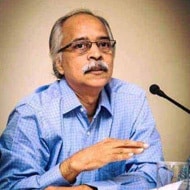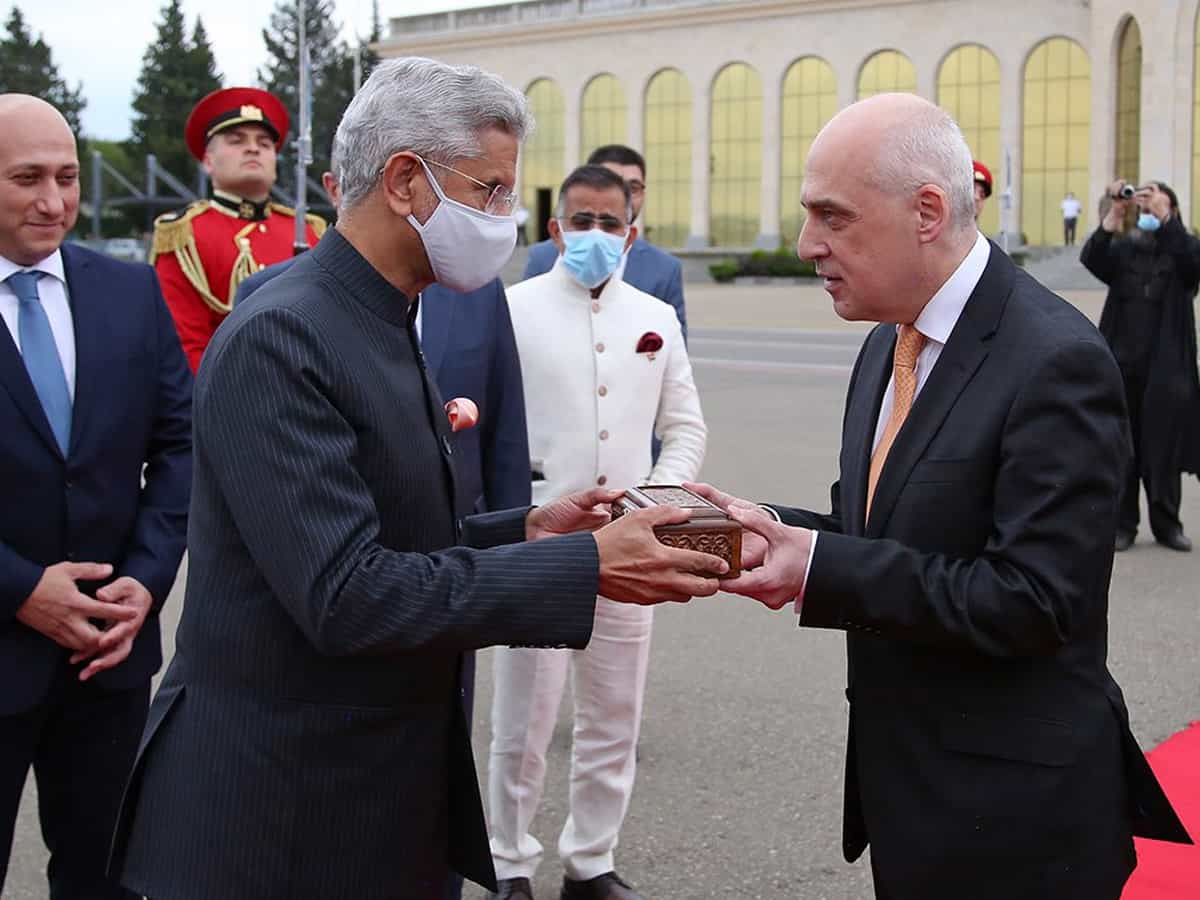
The recent gesture by India to handover the bone relics of the Queen of Georgia to that nation has two interesting dimensions—good diplomatic gesture to strengthen relations and the role of Indian Archaeologists and DNA fingerprinting from the CCMB, Hyderabad in the development.
India’s External Affairs Minister S Jaishankar on July 9 handed over a relic belonging to St Queen Ketevan, a royal from the 17th-century to his counterpart David Zalkaliani, also Vice-Prime Minister of the country.
The return of the relic, excavated in Goa was highly appreciated by the ruling Georgian Dream Democratic Party, which described it as a gesture which will be “remembered and appreciated”.
The people of Georgia have sentimental attachment and religious significance to the relics of the Queen, which could have prompted the Indian government to return them, said Nizamuddin Taher, former superintendent archaeologist of the Archaeological Survey of India (ASI), Goa Circle.
Based now in Hyderabad, his team is credited with the painstaking archaeological excavations work that finally led to the discovery of the relics in 2004.
How CCMB solved the puzzle
It was sometime in 2004, that the Archaeological Survey of India (ASI), approached the Council for Scientific Industrial Research-Centre for Cellular and Molecular Biology (CSIR-CCMB) to do DNA analysis to confirm the veracity of the relics.
Excavations by archeologists of the ASI, Goa-circle, led by Nizamuddin Taher, the Director and Abhijit assisted by a Portuguese exchange student, Sid Mendiratta, led to the discovery of the bone relics in 2003-04.
“There was not enough evidence to conclude that it indeed belonged to the Queen. Therefore we approached CCMB, Hyderabad, who were noted for DNA fingerprinting work and requested for ‘ancient DNA study in 2006”, said Taher, who is an alumni of the Archeology Department of the Osmania University, Hyderabad.
The CCMB is the first lab to have set up an exclusive Ancient DNA Study facility, which requires specialisation and skill to extract DNA samples from old samples and analyse round 2000.
The CCMB scientists led by Dr K Thangaraj, Dr Dipankar and a Ph D student Niraj Rai extracted the DNA samples from the ancient bone and successfully analysed it. They sequenced selected regions of the mitochondrial DNA. Then, it was compared to detailed analysis of select Georgians.
The results suggested similar DNA traces, pointing to the evidence that the bone excavated in the St Augustine’s Church in Goa was likely to be the remnant of Queen Ketevan of Georgia, Dr Thangaraj and team said in the research paper published online in the Journal ‘Mitochondrian’ in 2013. It was the first ancient DNA study from South Asia, they had claimed.
The archaeological work
In the 1980s, the Georgian Government (then part of Soviet Union) had approached India for help in the search for the relic. Several delegations visited and carried out joint work with the ASI in locating Queen Ketevan’s grave within the ruins of the Goan convent.
The hunt for the remains spanned nearly 26-years with Nizamuddin Taher and team doing the archaeological portion in the discovery with support from the Portuguese researcher. The DNA part was done by the CSIR-CCMB — comprising Niraj Rai, Manvendra Singh, Aditya Nath Jha and Kumarasamy Thangaraj and Gyaneshwar Chaubey of Estonian Biocentre and Lalji Singh of Banaras Hindu University.
Referring to the discovery of the location of the relics, Taher said his team of archaeologists had stumbled upon the tombstone of Manuel de Sequeira e Matos and Domongos da Trinidad’s on the Epistle Side, below the first window.
These findings matched the description of Silva Rego in his works (1958) in Portuguese of the entire Church complex in Goa. On this basis it was inferred that the black box containing relics were that of the Queen. It led to the identification of the Chapter Chapel within the convent of St Augustine, where the relics of the Queen were once kept.
As per literary evidences, available in Portuguese, two of her Augustinian friars, who had gone to Shiraz in 1623, were able to get hold of the mortal remains of the Queen, who was killed in 1624 and kept them with themselves till 1627.
These friars brought them to Goa and reportedly preserved them in the St Augustine Church. One of the relics is believed to be her right arm bone that was kept in a black box (stone sarcophagus) on the second window of the Epistle side of the chapel.
The complex was built by the Augustinian Order of Friars who arrived in Goa in 1572. First, the original convent at the Holy Hill was built. It was later enlarged and became one of the noteworthy places in Old Goa and described by foreign visitors too. The main Church dedicated to Our Lady of Grace, was started in 1597 and completed around 1610.
However, when the complex was abandoned by the Augustinians in 1835 due to the decree of the then Portuguese rulers, they must have taken the relics of the Queen with them or it must still be dispersed elsewhere in the complex as a result of the collapse of the Church or hidden them in the convent of sister organisations, says Taher.
The historical angle
According to historical accounts Queen Ketevan was born into a royal family of Georgia (Eastern Europe). In the medieval period, the Georgian kingdom was a vassal (subordinate) kingdom and a bone of contention between the Ottoman Sultans (Turks) and the Shahs of Safavid in Persia (now Iran).
Entire Persia and its surrounding region was under control of the emperor Shah Abbas I (1587-1629), who was contemporary to Mughal Emperor Jalaluddin Akbar in India.
In 1613, the Shah led an army to conquer the Eastern Georgian kingdom of Khakhety and took Queen Ketevan as prisoner. For about a decade (1614 to 1624) the Queen remained in Shiraz as prisoner.
In 1624, the Persian Emperor attempted to convert the Queen to Islamic faith and join his harem. As the Queen resisted all attempts, she was tortured and finally strangled to death.
Somasekhar Mulugu, former Associate Editor & Chief of Bureau of The Hindu BusinessLine, is a well-known political, business and science writer and analyst based in Hyderabad

